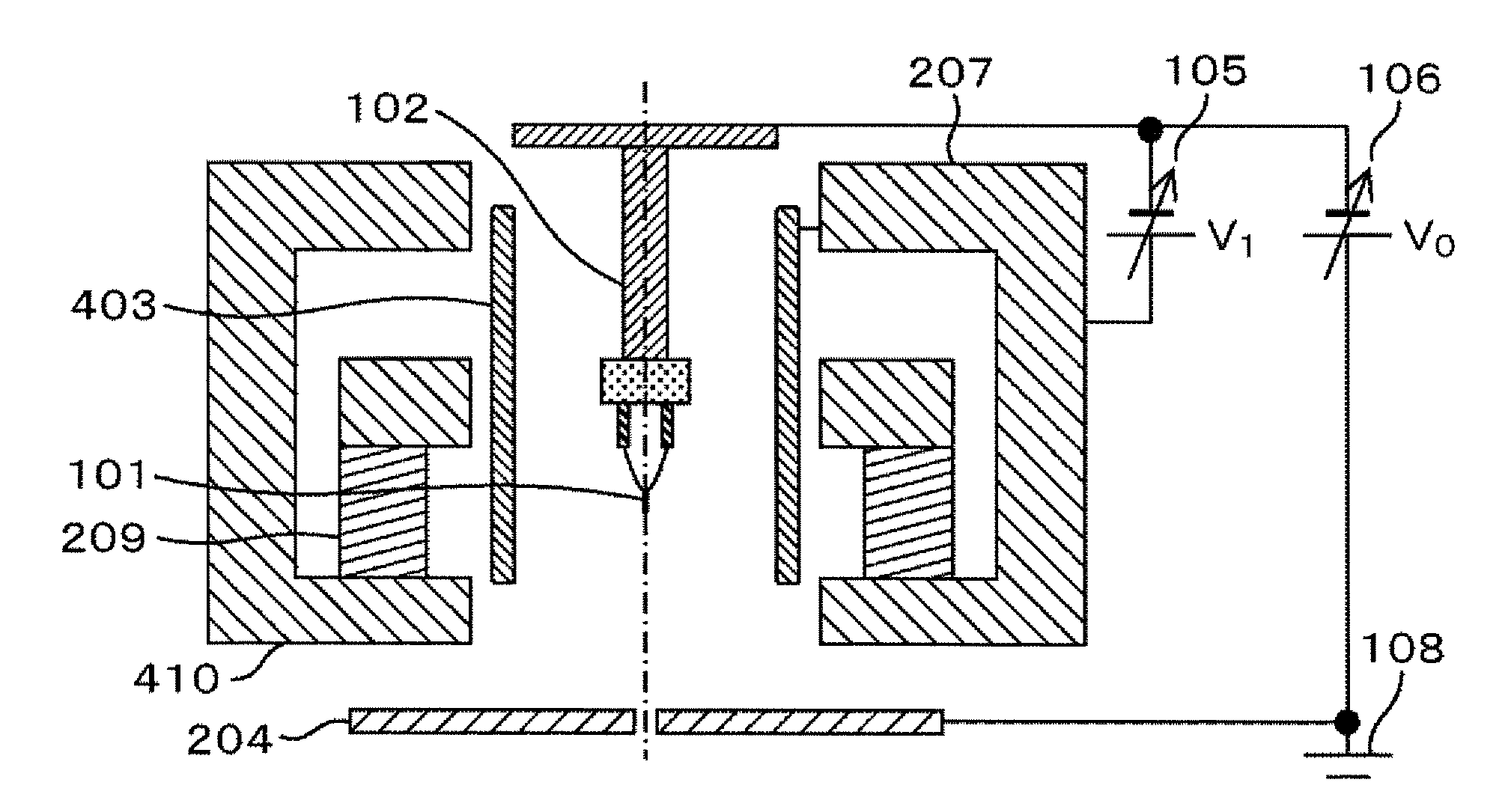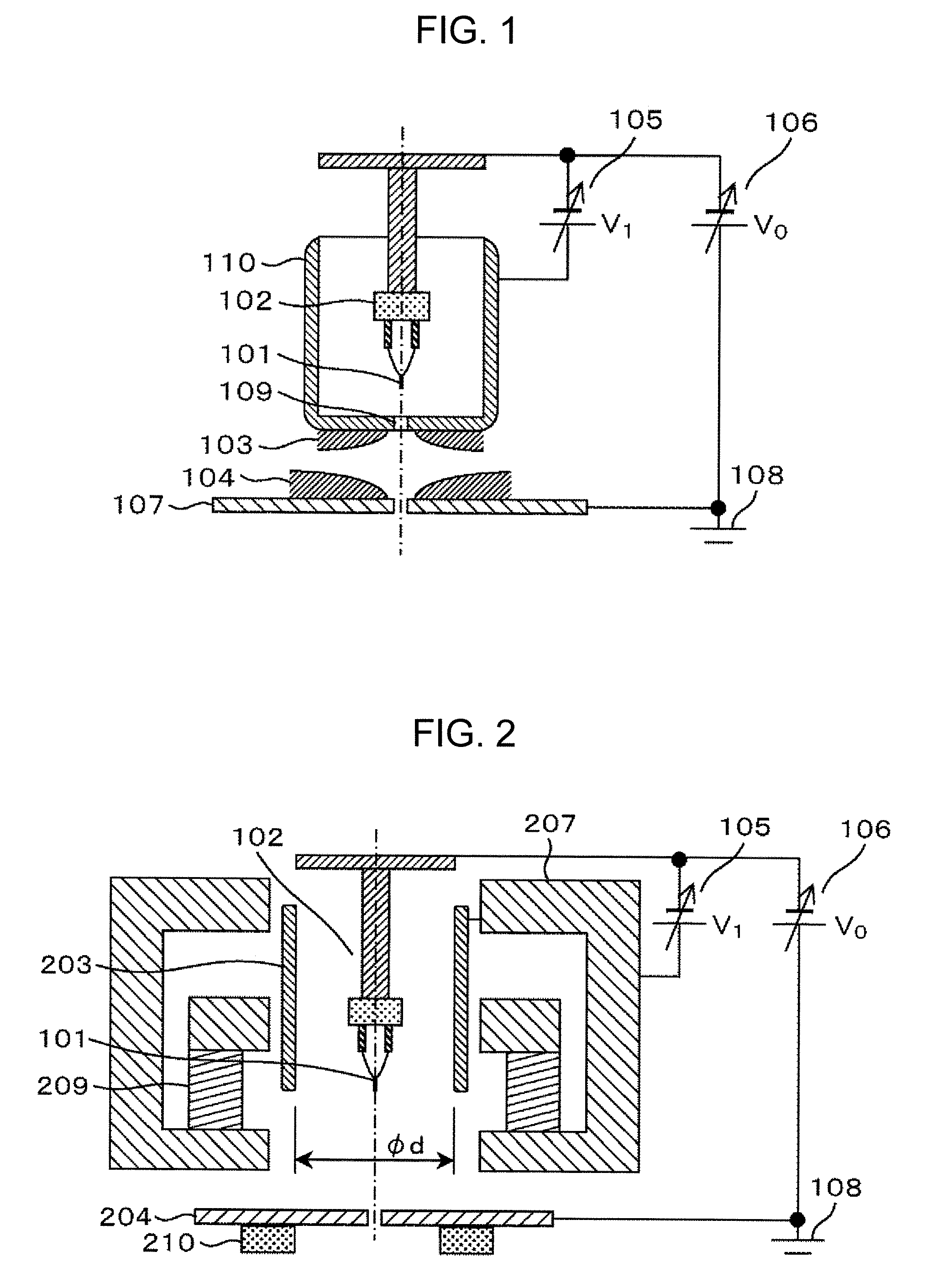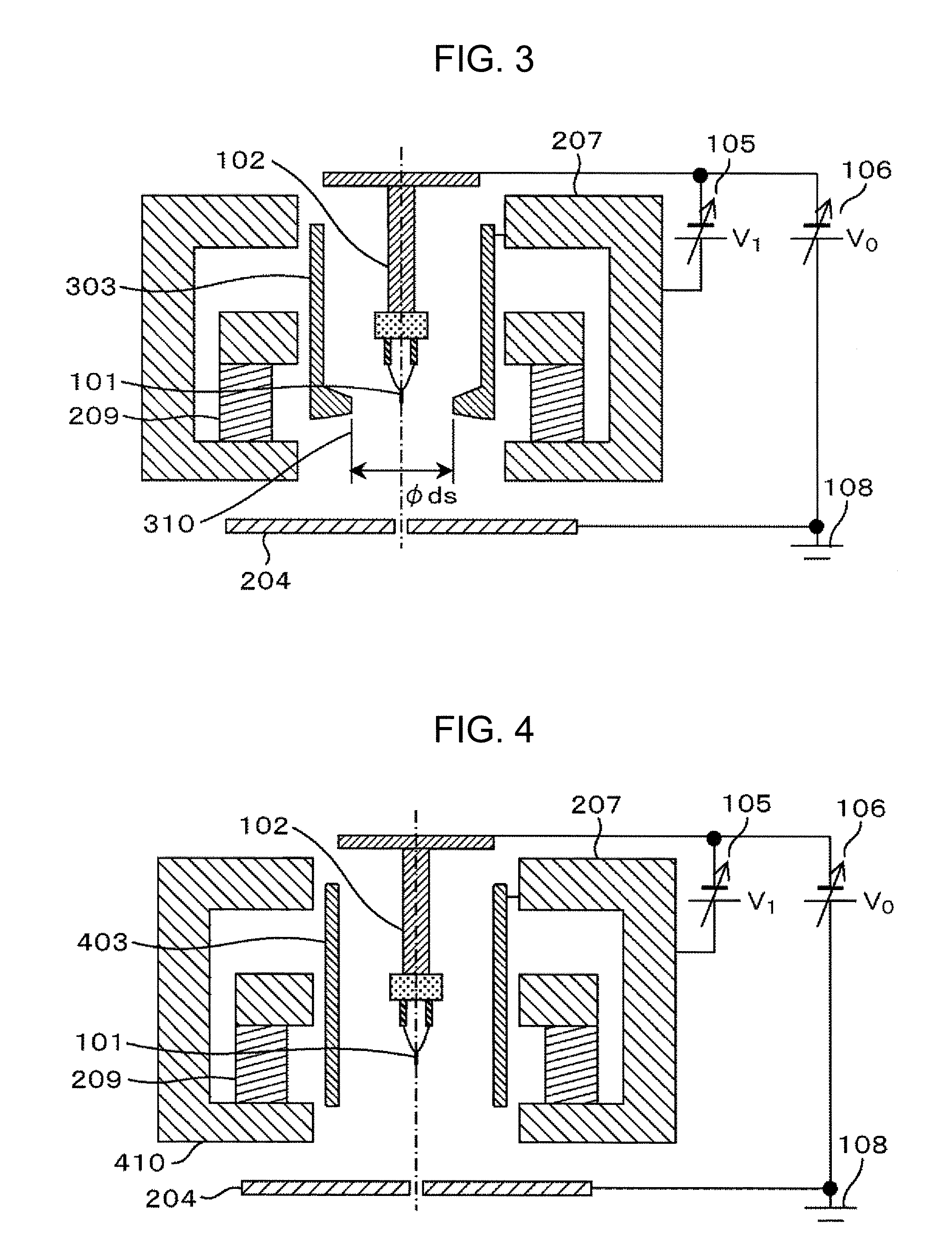Electron gun
- Summary
- Abstract
- Description
- Claims
- Application Information
AI Technical Summary
Benefits of technology
Problems solved by technology
Method used
Image
Examples
embodiment 1
[0037]FIG. 2 illustrates a mode of an immersion-type cold cathode field-emission electron gun as an exemplary embodiment of the present invention.
[0038]FIG. 2 illustrates the structure of the electron gun according to the present invention. An electron source 101, an electron source holding part 102, an extraction electrode 203, an anode 204, a magnetic path 207, and a permanent magnet 209 are disposed in a vacuum container (not illustrated), and the inside of the vacuum container is maintained at an ultrahigh vacuum of approximately 10−8 Pa. A potential V0 (negative potential) is applied to the electron source 101 by an acceleration power supply 106 with reference to a ground part 108. Further, a voltage V1 (positive voltage, several kilovolts) is applied to the extraction electrode 203 by an extraction power supply 105 with reference to this electron source potential. Field emission is caused by the potential (V1), and an electron beam (having an energy of V0−V1) is emitted from t...
embodiment 2
[0046]A modified example of Embodiment 1 is described. Even if the shape of the extraction electrode is not completely cylindrical and the extraction electrode has a slight aperture structure, it is possible to achieve the object to converge an electron beam mainly by the magnetic field lens while suppressing the converging force and aberration of the electric field lens to be low.
[0047]FIG. 3 illustrates the case where the extraction electrode does not have a cylindrical shape. In FIG. 3, a protruding part is provided to such an extent that an extraction electrode 303 does not produce the lens action of the electric field. It is desirable that an inner diameter 310 of the smallest part of the extraction electrode aperture at this time be equal to or larger than 2 mm.
[0048]FIG. 10 shows example theoretical analysis results obtained by assuming shapes, in which theoretical analysis results when an inner diameter ds of the smallest part is set to 1 mm and 2 mm are overlaid on the grap...
embodiment 3
[0049]Further, regardless of whether the anode-side end of the extraction electrode is positioned on the anode side or on the cathode side with respect to the electron source, it is possible to achieve the object to converge an electron beam mainly by the magnetic field lens while suppressing the converging force and aberration of the electric field lens to be low.
[0050]FIG. 4 and FIG. 5 each illustrate another embodiment relating to the position of the anode-side end of the extraction electrode.
[0051]In FIG. 4, an extraction electrode 403 is extended toward the anode 404 so as to be longer than the extraction electrode 203 in FIG. 2. The extraction electrode 403 may be extended toward the anode 204 beyond a magnetic path lower surface 410 so as to hide the entire permanent magnet 209 and magnetic path 207 from the electron beam path. Even in this case, the electric field lens effect is not considerably large. As illustrated in FIG. 5, the anode 204 side-end of an extraction electro...
PUM
 Login to View More
Login to View More Abstract
Description
Claims
Application Information
 Login to View More
Login to View More - R&D
- Intellectual Property
- Life Sciences
- Materials
- Tech Scout
- Unparalleled Data Quality
- Higher Quality Content
- 60% Fewer Hallucinations
Browse by: Latest US Patents, China's latest patents, Technical Efficacy Thesaurus, Application Domain, Technology Topic, Popular Technical Reports.
© 2025 PatSnap. All rights reserved.Legal|Privacy policy|Modern Slavery Act Transparency Statement|Sitemap|About US| Contact US: help@patsnap.com



